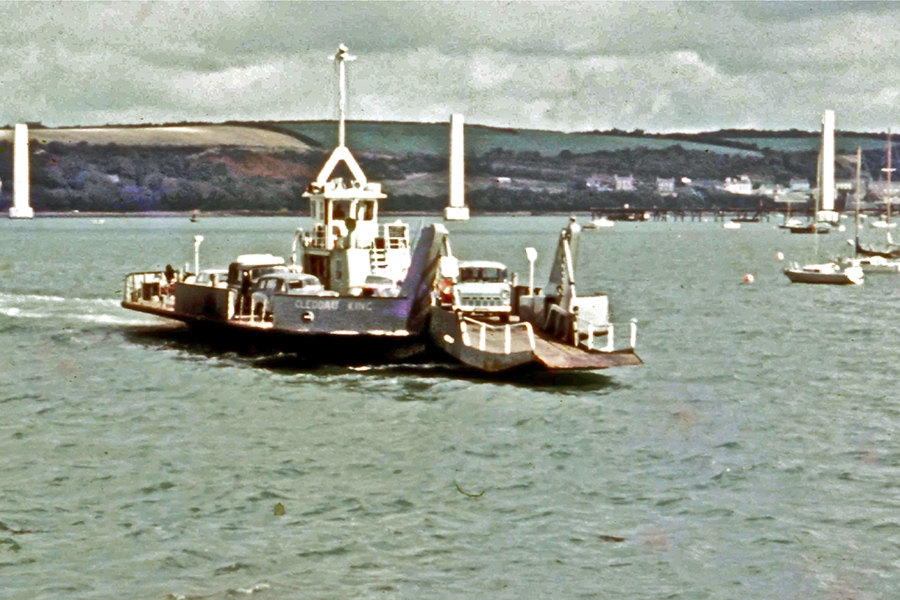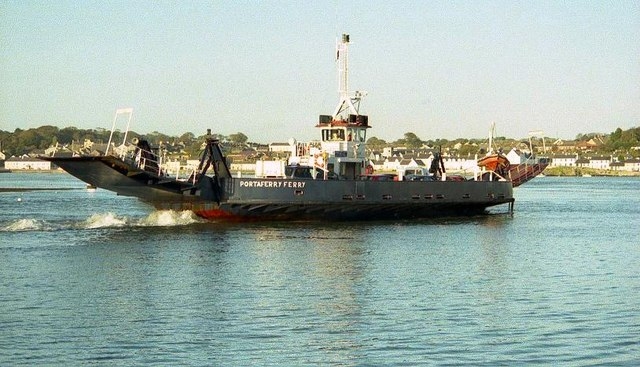Strangford II ushers in a new era for historic lifeline ferry link.
An historic ferry link.
The Strangford Lough Ferry across “The Narrows” between Strangford and Portaferry has existed in one form or another without a break for over 4 centuries, since the time of James I. Records even exist showing that a ferry across Strangford Lough existed as far back as the 1180’s. The current service makes the 0.6nm crossing in around 8 minutes, a significant saving in time from the alternative 47 mile trip by road taking around 90 minutes.
A first for Ireland
The ferry between Strangford and Portaferry holds the distinction of having the first steam powered ferry in the whole of Ireland, the paddle steamer Lady of the Lake, as far back as 1836. This was some 36 years before Belfast got its first steam powered ferry. Lady of the lake was a paddle steamer built by Alexander McLaine in Belfast and launched on May 29th 1836. Her maiden voyage across the lough was on the 18th of June 1836, just two hours after her first arrival in Portaferry. It was not until 1872 that Belfast got its first steam ferry. Operated by the newly formed ‘Portaferry and Strangford Steamboat Company’, the venture proved commercially unsuccessful despite the vessel being built expressly for the service and being able to cross between the two ports every 15 minutes, and in 1839 Lady of the Lake was sold at auction.
Strong currents
Strangford Lough is known for its strong currents – in-fact the name ‘Strangford’ comes from the old Norse ‘Strangr Fjörðr’, or Strong Fjord. It is perhaps unsurprising then that the service has had at least 2 tragedies. In addition to the capsize of one of the pair of converted landing craft (see ‘The ‘Car Ferry Era’ below), in 1913 the passenger ferry Lizzie also capsized with the loss of 3 souls. It is due to these strong currents that the current Strangford Lough ferries often do not take a direct diagonal route across the lough, often sailing perpendicular to the coast after leaving port before crossing ‘The Narrows’.

The Car Ferry Era
The first ‘proper’ vehicle ferries on the link appeared in 1946 – a pair of converted twin-engined flat-bottommed WWII landing craft, each carrying 36 passengers and two cars. However, this service was short-lived as in 1947 one of the craft capsized with the loss of one life (and the death of all of the animals onboard).
Small family-operated passenger ferry boats followed until 1967, when the service was nationalised and the first purpose-built vehicle ferry MV Strangford Ferry was ordered from Verlome in Cork, joining the service in 1969. Some people at the time wondered if such a large ferry was needed, but in 1975 she was joined by another vehicle ferry which would add more capacity when required and act as a backup ship. This time the ‘new’ vessel was the 1962 built Cleddau King, purchased from the defunct Hobbs Point service across the Cleddau Estuary in Wales. Like Strangford Ferry she used Voith-Schneider propulsion units instead of conventional screw propellers or paddles, and was powered by 2 diesel engines. She was converted locally by Harland and Wolff and renamed MV Porta ferry. MV Porta ferry was something of a bargain, having been purchased from Pembroke County Council for just £43,000 after she had been made redundant by the newly constructed Milford Haven (since renamed Cleddau) bridge. As purchased she had a somewhat unusual arrangement, having a ramp at one end for use on the slip at Hobbs Point, and openings both at the opposite end at along the sides of the vessel. This was due to loading and unloading taking place via a pontoon at the Neyland end of the service. As the ‘new’ vessel only had a ramp at one end she needed a costly second hydraulic ramp fitted and the sides of the vessel welded up before she was suitable for her new service.

A third, passenger only vessel Isle O’Valla was also purchased for the service in the mid-70’s, acting as a passenger only backup for when the service was not operated by either of the 2 vehicle ferries. She would continue in this role until replaced by Rachlyn in 2009.
MV Porta ferry was renamed MV Portaferry in 1990 (though like MV Strangford she had the suffix “ferry” added to the name painted on her side), and continued to operate the service until replaced by the brand-new Portaferry II in 2002.

The need for a new ferry.
The first purpose-built vehicle ferry on the link, MV Strangford, was launched at the Verlome shipyard in Cork on 15th August 1969. 4 decades later, the vessel was still in regular service and proving increasingly unreliable. Escalating maintenance costs also meant that keeping the vessel in service was becoming increasingly less economically viable. A report in 2009 recommended that MV Strangford be replaced in 2016 following life extension work in order to keep the vessel in service until that time. This life extension work took place locally at Harland and Wolff in 2011 and consisted of dry docking the vessel for sandblasting and a full repaint and fitting new vehicle ramps in addition to ongoing maintenance.
The naval architects Burness Corlett Three Quays (BCTQ) were engaged to come up with a design for a new vessel which like Portaferry II would be designed specifically for the demands of the service. Following a tendering process the Merseyside yard of Cammell-Laird was chosen to construct the new vessel, for delivery in the latter part of 2016.
The design of Strangford II
The design of Strangford II is an evolution of that of Portaferry II, which herself could be said to be a larger and more modern version of MV Strangford. Despite appearances, Strangford II is an all new design and not simply a repeat of Portaferry II. All 3 vessels were in-fact designed by BCTQ or its predecessor Burness Corlett. Perhaps the most noticeable structural difference between Portaferry II and Strangford II to casual observers is that the latter vessel lacks a traditional funnel. She is also physically larger.
Cleaner and quieter
Unlike her running mate, Strangford II uses a water-injected ‘wet’ exhaust system which ejects her pre-treated engine emissions at the waterline. This significantly reduces the amount of dangerous particulates emitted in to the air. The Cummins diesel engines fitted to the vessels use and SCR (Selective Catalytic Reduction ) system to further reduce emissions. This works by injecting a controlled level of urea solution into the exhaust output as a catalyst, effectively converting NOx (nitrogen oxide) and urea into harmless nitrogen and water. SCR is a popular method of reducing emissions in industrial applications and heavy road vehicles (where the urea solution is called ad-blue), and is becoming increasingly common in marine applications. Strangford II has been designed to meet the existing and future emissions regulations under MARPOL Annex VI, for the control of NOx and SOx.

Steps have also been taken to reduce the amount of noise Strangford II makes, both whilst crossing ‘The Narrows” and when loading and unloading. The engines are equipped dry exhaust gas silencers to reduce airborne noise , and resilient engine mountings to reduce the transmission of engine vibrations through the structure. The wet exhaust system also helps reduce noise, as it reduces exhaust noise output compared to that from a traditional funnel arrangement. The air intake and exhaust vents feature louvers and operate at low velocity to reduce noise output, and the accommodation is insulated to further reduce noise transmission into the area. Finally, the ramp lower mechanism features a speed control to reduce the amount of noise made on impact with the slip.
Other improvements
Strangford II was designed to accommodate up to 260 passengers and 28 cars, like Portaferry II. However, a number of changes have been made onboard meaning Strangford II is far from a facsimile of the older vessel.
The vehicle deck consists of 2 x 40.5m long 1.8m wide lanes, and 1x 40.5m 2.5m wide lane (suitable for HGV’s).
Construction

Timelapse video of the construction of Strangford II. Cammell Laird.

Entry into service
PR: New Strangford Ferry begins service

Additional reading: Regular site photographic contributor Scott Mackey had an article on the Strangford Lough Ferry service published in the May 2017 issue of ‘Sea Breezes’. A shortened version with less pictures is available to view at http://www.seabreezes.co.im/index.php/features/places/2486-strangford-lough-ferry-service
Article Copyright © Steven Tarbox 2016-2017. With thanks to Scott Mackey; Michael Murray, Carrie Teggart, and Tim Tew at the DFI; and Andy at Das Boot photography for their help in compiling this feature.
